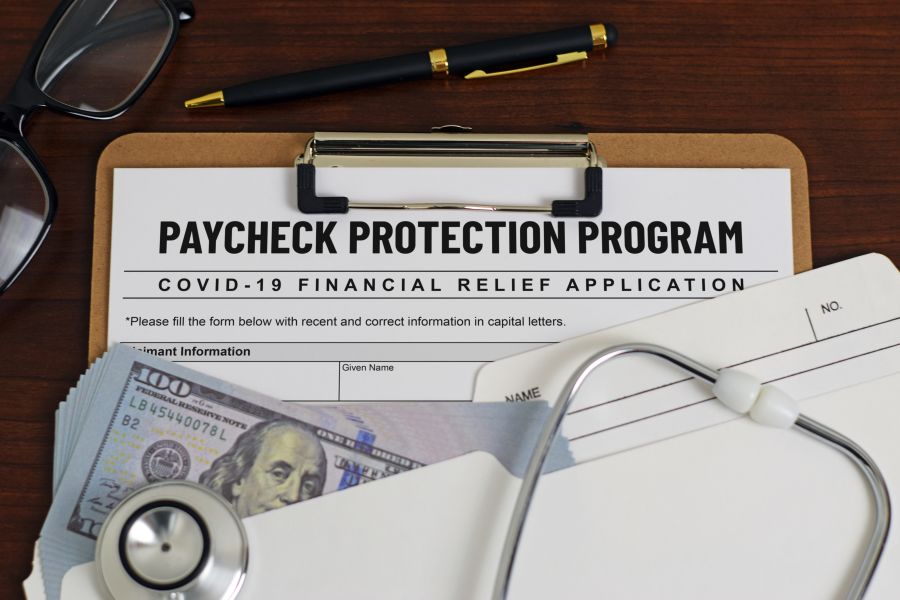Best Practices for PPP Loan Forgiveness

Congratulations on receiving your Paycheck Protection Program (PPP) loan! We hope it provides much needed cash during these uncertain times. Now that you have the funds, here are some best practices for PPP loan forgiveness over the next 8 weeks to ensure maximum retention.
Use the Funds for Forgivable Purposes
Best practices for PPP loan forgiveness revolve largely on whether you use the money to pay forgivable expenses. These include:
- payroll costs (if you’re self-employed, these costs include the net profit amount from your business, as reported on your 2019 tax return),
- interest payments on mortgages incurred before 2/15/20,
- rent payments on leases dated before 2/15/20, and
- utility payments under service agreements dated before 2/15/20.
However, according to the Small Business Administration (SBA), not more than 25% of the forgivable loan amount (the amount of the loan used to pay forgivable expenses) may be attributable to nonpayroll costs. In other words, at least 75% of the loan must be used for payroll costs.
To help you meet this requirement, consider implementing the following best practices:
- Set up a separate bank account for PPP funds, or deposit funds into your business savings account and transfer the money to checking and payroll accounts when needed.
- If you feel that 75% of the loan won’t be used for payroll, consider modifying your payroll periods (from semimonthly to weekly, for example) or paying out bonuses toward the end of the eight-week period.
- Gather and analyze mortgage documents, leases, and utility bills to make sure obligations arose prior to 2/15/20.
- If expenses are paid with a business credit card, make sure that portion of the credit card bill is paid with PPP funds before the end of the eight-week period.
Keep Track of Employee Headcount and Salary Levels
We know you already do this, but extra care should be taken to make sure these numbers are accurate. For the next eight weeks, if your average number of full-time equivalent employees per month is less than the average during a base period, your forgivable loan amount will be reduced. The base period is either:
- 02/15/19 through 06/30/19, or
- 01/01/20 through 02/29/20.
We can help you choose the period that produces the best result.
Also, your forgivable loan amount will be reduced if salary levels are cut by more than 25%. For each employee who earns less than $100,000, you compare total salary paid during the next eight weeks with that employee’s salary during the most recent full quarter. If the reduction is greater than 25%, a corresponding reduction must be made to the loan forgiveness amount. Note that this test requires the business to look at every employee individually.
If you have already laid off or furloughed workers, try to restore employee headcount and salary levels by 6/30/20. If you do so, any headcount and salary reductions that occurred between 2/15/20 and 4/26/20 will be ignored. Keep in mind you don’t have to rehire the same employees. Also, rehired workers don’t actually have to perform customary work duties. Before taking action, you should consult with your labor and employment attorney to work out the terms for rehiring workers.
Focus on Recordkeeping
This is crucial to obtaining maximum loan forgiveness. At the end of the day, you have to show the bank you used the loan for eligible expenses. That’s why we suggest creating a spreadsheet of all eligible expenses as they’re incurred. We also recommend you maintain a special folder (electronic or otherwise) that contains the following documentation:
- Employee headcount calculations.
- Payroll tax filings (both federal and state).
- Mortgage documents, leases, and utility bills.
- Cancelled checks and payment receipts.
- Bank statements for the separate account used to pay forgivable expenses. If you didn’t set up a separate bank account, include copies of other bank statements with forgivable expenses highlighted to support any Electronic Funds Transfer (EFT) payments.
Get Ready to Apply for Forgiveness
You may not apply for forgiveness until at least eight weeks after receiving your PPP loan. When you’re ready, you will need an authorized representative to certify that:
- the documentation presented is true and correct, and
- the amount for which forgiveness is requested was used to retain employees, make interest payments on a covered mortgage obligation, make payments on a covered rent obligation, or make covered utility payments.
Once the bank receives your loan forgiveness application, it has 60 days to review and either approve or deny it.
If, for some reason, only a portion of the loan is forgiven, you will need to fulfill all remaining payment obligations. The unforgiven portion of the loan will be subject to a two-year note with a 1% interest rate. Fortunately, no payments will be due for the first six months (although interest will continue to accrue). In addition, no collateral or personal guarantee is required, and there are no prepayment penalties.
Alternative Recommendations from the AICPA
The AICPA has also issued it’s recommendations around the implementation and execution of the PPP. These AICPA recommendations are not meant to be comprehensive. Rather, these recommendations are meant to help minimize confusion and complexity for applicants and to help drive consistency with lenders with the overall objective of helping drive an effective PPP application and forgiveness processes that quickly directs relief funds into the hands of small business owners and their employees.
(This is Blog Post #809)


